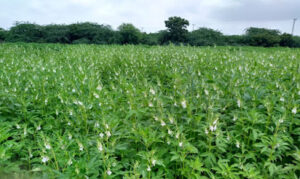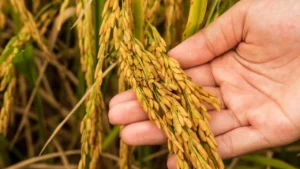
Introduction
Sugarcane is a perennial crop belonging to the family Poaceae. It is a major crop grown for its sugar content which is extracted from its juicy stalks. Sugarcane is widely cultivated in tropical and subtropical regions of the world and is an important source of income for many farmers.
Agronomy of sugarcane
Sugarcane gives high-yielding crop that requires warm temperatures, abundant sunlight and well-drained fertile soils. It is usually propagated vegetatively through stem cuttings, which are planted in rows at a distance of 1-1.5 meters apart. Sugarcane requires regular irrigation and fertilization to achieve optimal growth and yield.
Recommended sugarcane varieties
varieties of sugarcane that are recommended for cultivation in Pakistan. Some of the popular and high-yielding varieties of sugarcane in Pakistan include:
- CP 77-400
- CPF-253
- CPF-250
- CPF-251
- SPF-234
- SPF-213
Various sugarcane varieties are recommended based on their performance in various regions of Pakistan and their adaptability to local climatic conditions and disease pressures, with this variety being highly recommended for cultivation in the Punjab and Sindh regions for its high yield potential, early maturity, and resistance to diseases such as red rot and smut.
Number of insect pests
Sugarcane Borers
- Top borer
- Stem borer
- Root borer
- Pink borer
Sucking insect pests
- Black bugs
- White fly
- Mealybug
- Thrips
- Pyrailla
Chewing Pests
- Termites
- Armyworm
Management of sugarcane
Effective management practices are essential for the successful cultivation of sugarcane. These practices include:
- Irrigation
- Fertilization
- weed control
- Pest management
In addition, the selection of appropriate sugarcane varieties and timely harvesting are also important factors that affect the yield and quality of sugarcane.
Harvesting
The harvesting time is 12-18 months and the process involves cutting the stalks close to the ground and then transporting them to the processing plant for further processing.
Processing
The processing of sugarcane involves several stages, including juice extraction, clarification, evaporation, crystallization, and drying. Sugarcane juice produces raw sugar to produce processed sugar.
Sugarcane is an important crop that provides a significant source of income for many farmers around the world. Its cultivation requires effective management practices and control of insect pests to achieve optimal yield and quality. The processing of sugarcane involves several stages, which result in the production of refined sugar for various purposes. Overall, sugarcane cultivation and processing play an important role in the global economy and food industry.



